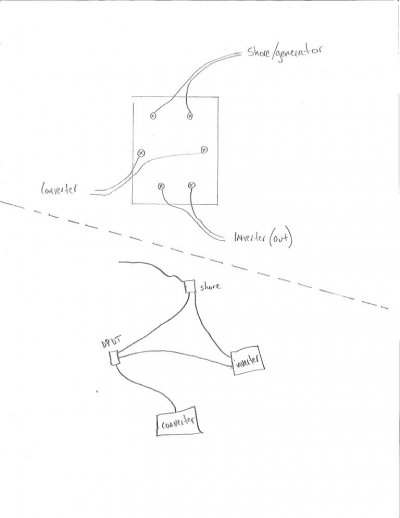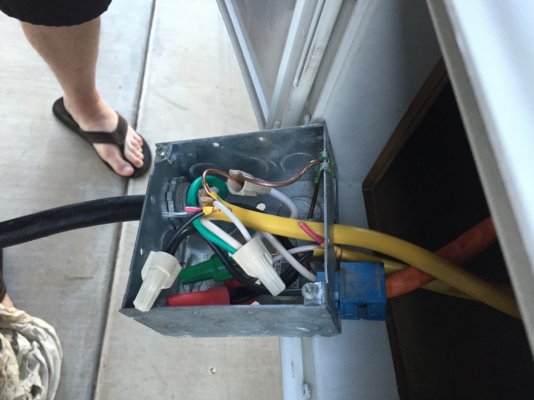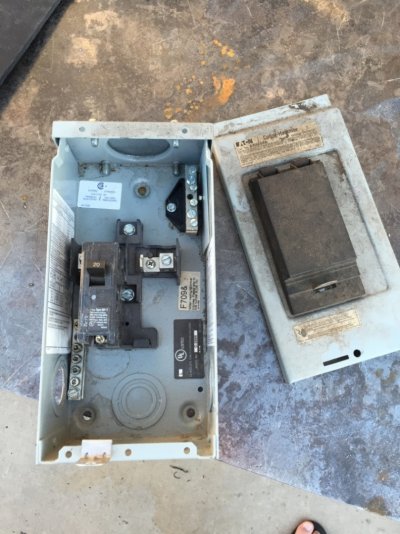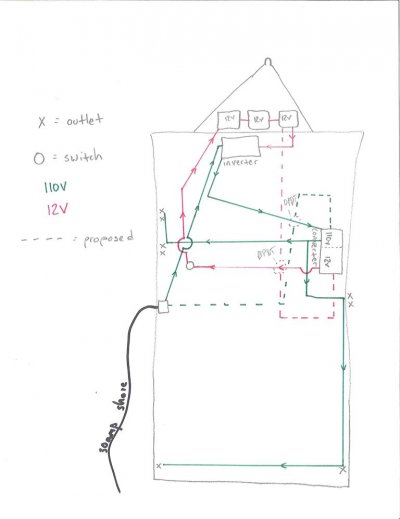Gary RV_Wizard
Site Team
Here is one on Amazon:
http://www.amazon.com/Heavy-Duty-Toggle-Switch-Center/dp/B001FRE1E8
http://www.amazon.com/gp/product/B00004WLKA/ref=pd_lpo_sbs_dp_ss_1?pf_rd_p=1944687602&pf_rd_s=lpo-top-stripe-1&pf_rd_t=201&pf_rd_i=B001FRE1E8&pf_rd_m=ATVPDKIKX0DER&pf_rd_r=0BWH1W9D9B0QJ5XMWAE2
Wire the output of the switch (the "center" terminals) to the load, one input terminal set to the 120v line source, and the other input to the inverter output line. When you put the switch to the Line side, you have a direct path from 120v line to the load (wall outlet or whatever you are powering), thus bypassing the inverter altogether. When you flip it to the inverter input side, the line power is removed from the load and the load receives power from the inverter line instead. It doesn't matter if the 120v line is hardwired to the inverter and hot, or if the inverter remains on, cause the inverter output line is terminated at the DPDT switch unless it is in the inverter-feed position.
Since it is double pole, both the hot & neutral get switched. Ground is not a concern - they all ultimately are common anyway (connected to the RV chassis at inverter and at line load center).
The above switch has a "dead center", but that is not necessary. You can use one without that feature just as well.
http://www.amazon.com/Heavy-Duty-Toggle-Switch-Center/dp/B001FRE1E8
http://www.amazon.com/gp/product/B00004WLKA/ref=pd_lpo_sbs_dp_ss_1?pf_rd_p=1944687602&pf_rd_s=lpo-top-stripe-1&pf_rd_t=201&pf_rd_i=B001FRE1E8&pf_rd_m=ATVPDKIKX0DER&pf_rd_r=0BWH1W9D9B0QJ5XMWAE2
Wire the output of the switch (the "center" terminals) to the load, one input terminal set to the 120v line source, and the other input to the inverter output line. When you put the switch to the Line side, you have a direct path from 120v line to the load (wall outlet or whatever you are powering), thus bypassing the inverter altogether. When you flip it to the inverter input side, the line power is removed from the load and the load receives power from the inverter line instead. It doesn't matter if the 120v line is hardwired to the inverter and hot, or if the inverter remains on, cause the inverter output line is terminated at the DPDT switch unless it is in the inverter-feed position.
Since it is double pole, both the hot & neutral get switched. Ground is not a concern - they all ultimately are common anyway (connected to the RV chassis at inverter and at line load center).
The above switch has a "dead center", but that is not necessary. You can use one without that feature just as well.




